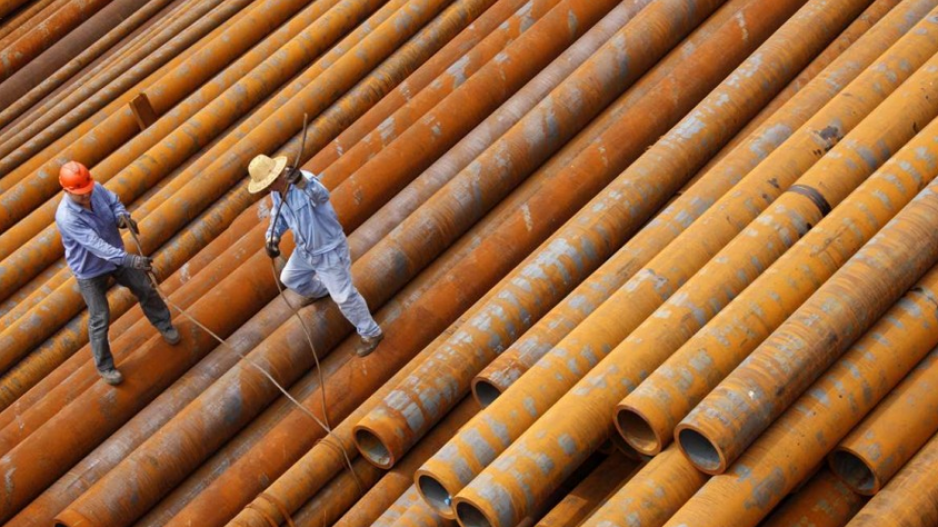Beijing is mulling over a plan to merge the major state-owned production facilities for steel pipes used in the oil and gas industry, in a move that would be likely to create the biggest manufacturer of its kind worldwide.
The proposal forms part of the government’s aim of reducing overcapacity and gaining pricing power over the products.
According to two industry officials who have been consulted by regulators about the potential consolidation, the merged businesses would have a combined capacity of up to 15 million tonnes. The state authorities are working on the details of the deal.
“The proposal is well received by authorities and steelmakers,” said one of the officials who asked not to be identified. “The consolidation will help avoid price wars and it is in line with the government’s policies.”
Major production assets for cold-rolled seamless steel pipes that are currently controlled by Tianjin Pipe, Baosteel, Baogang Group, Ansteel and Valin Group would be incorporated into the new entity, which has yet to be named.
The National Development and Reform Commission and the Ministry of Industry and Information Technology (MIIT) will be responsible for orchestrating the consolidation.
If it gets the final go-ahead, the state-owned juggernaut will have more than a 50 per cent share of the domestic market.
“It is a big plan to consolidate the fragmented sector since the manufacturing plants under several major state-owned steelmakers are scattered across the country,” said Xu Zhongbo, president of Beijing Metal Consulting. “A concerted effort to upgrade the facilities in future can be expected.”
China had been heavily relying on imported oil pipes before 1990 and it set up Tianjin Pipe in 1989 to bolster domestic production of the specialist steel products.
Chinese-made oil pipes are not only supplied to the domestic oil giants, but are exported to overseas markets such as the Middle East.
Seamless pipes, made by boring a hole through a steel bar and then rolling it, can withstand extreme temperatures and pressure.
“The timing is good since there are signs of a recovery in the oil industry,” Xu said. “More orders from the Middle East oil companies are in the pipeline.”
Beijing is striving to consolidate its fragmented steel sector as it takes on the formidable challenge of reducing excessive stockpiles and boosting the profitability of state-owned manufacturers.
Most steelmakers, saddled with outdated capacity and weak demand, suffered steep losses in 2015 as the mainland leadership gave priority to restructuring the embattled state-owned assets to avoid an economic hard landing.
In November 2016, the MIIT published new guidelines about the consolidation of the steel sector, setting a new ambitious goal under which 10 of the leading players in the sector will amass a 60 per cent share of the market by 2020.
Last July, Beijing announced the merger of Shanghai-based Baosteel and Wuhan Iron and Steel, headquartered in central Hubei province, to create the mainland’s largest steelmaker.
Further consolidations will be conducted to reach the new goal, with other major steel companies including Ansteel, based in northeastern Liaoning province, and Baogang, in Inner Mongolia, likely to be involved.
Through mega-mergers, the state authorities could eradicate outdated capacities to avoid the overlapping of low-end products.
Seamless pipe is viewed as a segment that requires advanced technical know-how in the mainland.
Analysts said a merged state-owned oil pipe giant would still face stiff competition as privately-owned companies in Jiangsu and Shandong provinces have also upgraded their facilities in recent years, and now produce pipes that are on par with the international standard.
Read the original article on the South China Morning Post.
Check out BIV’s podcast for the week of January 11, 2017:




